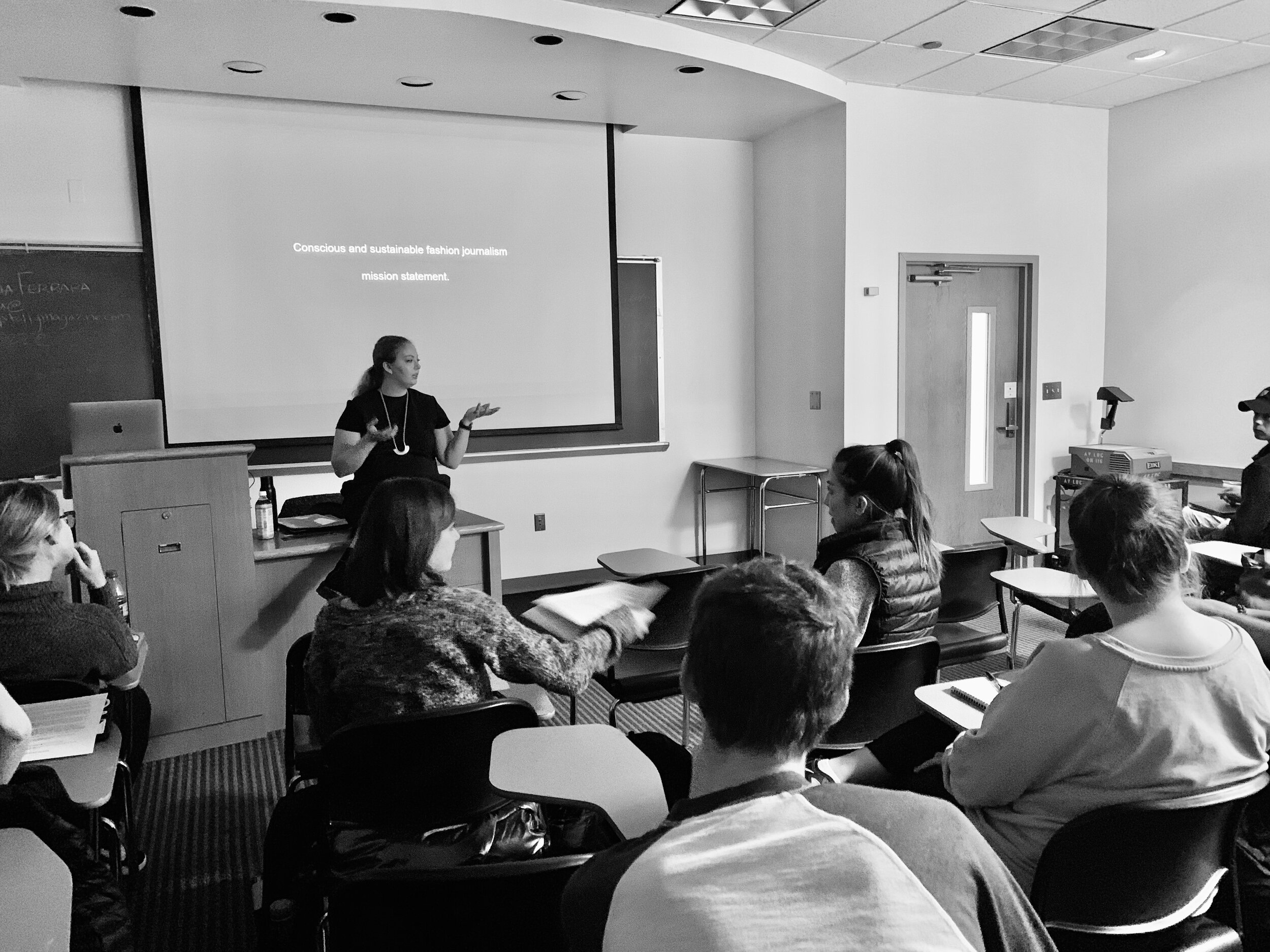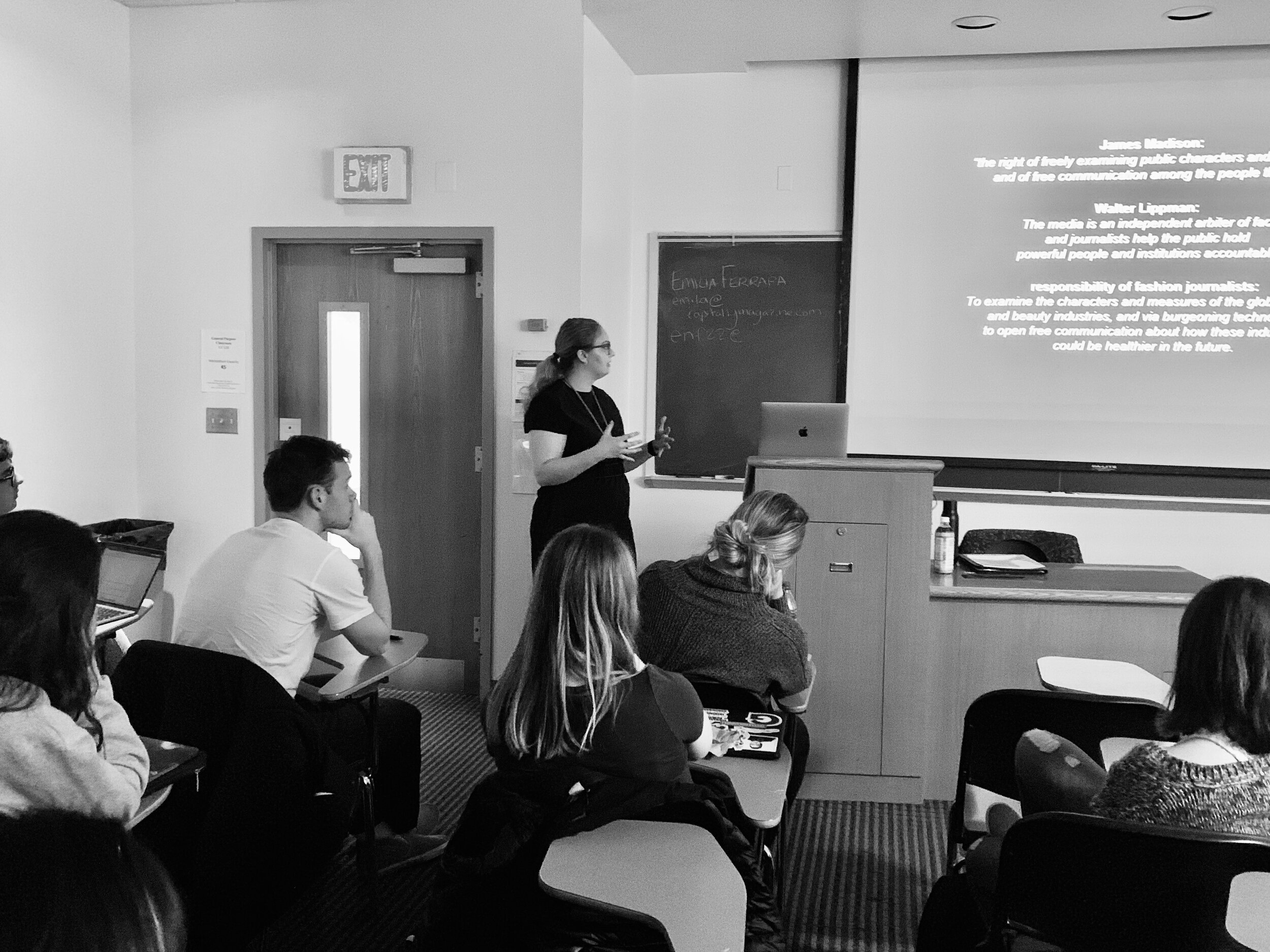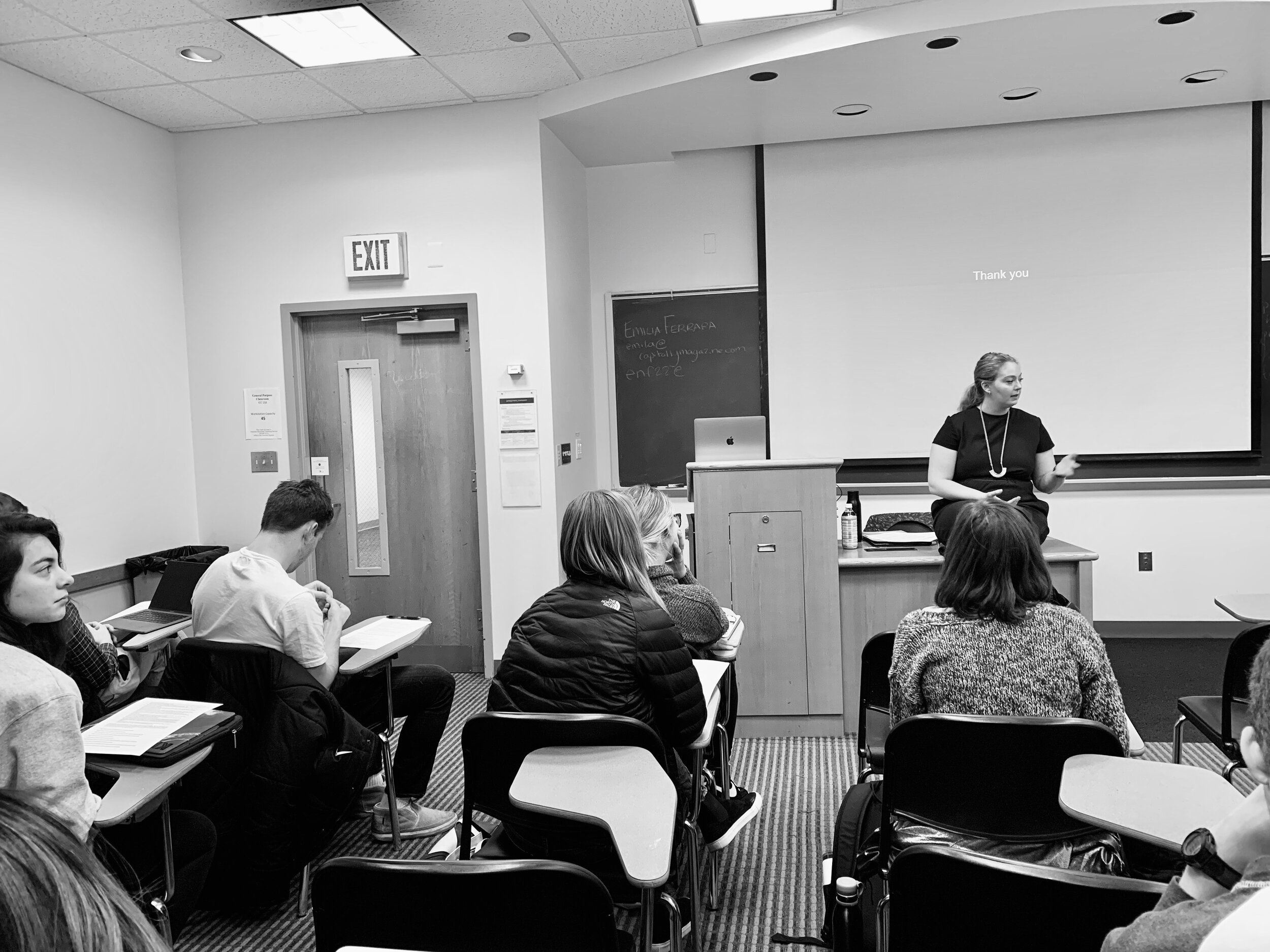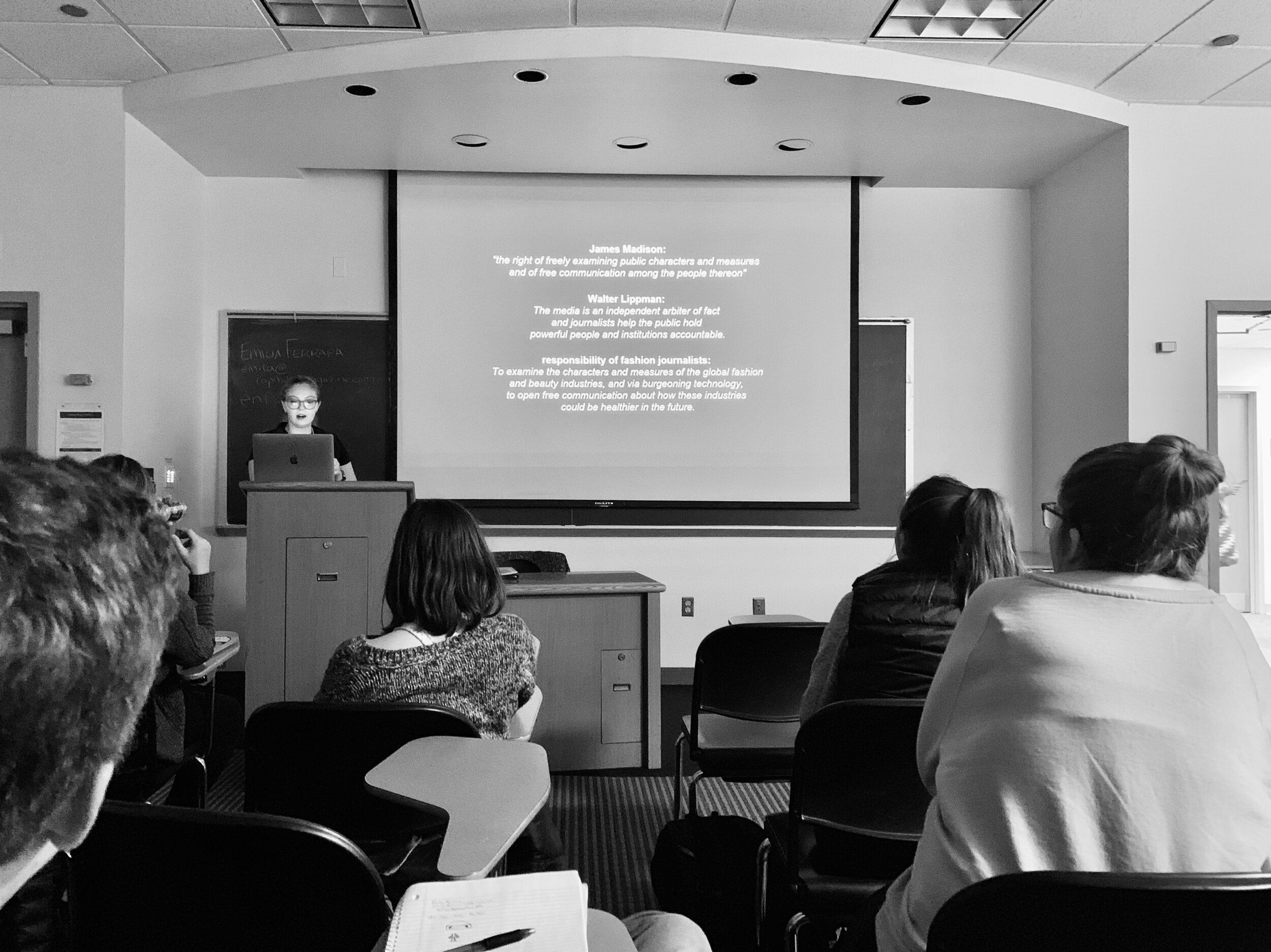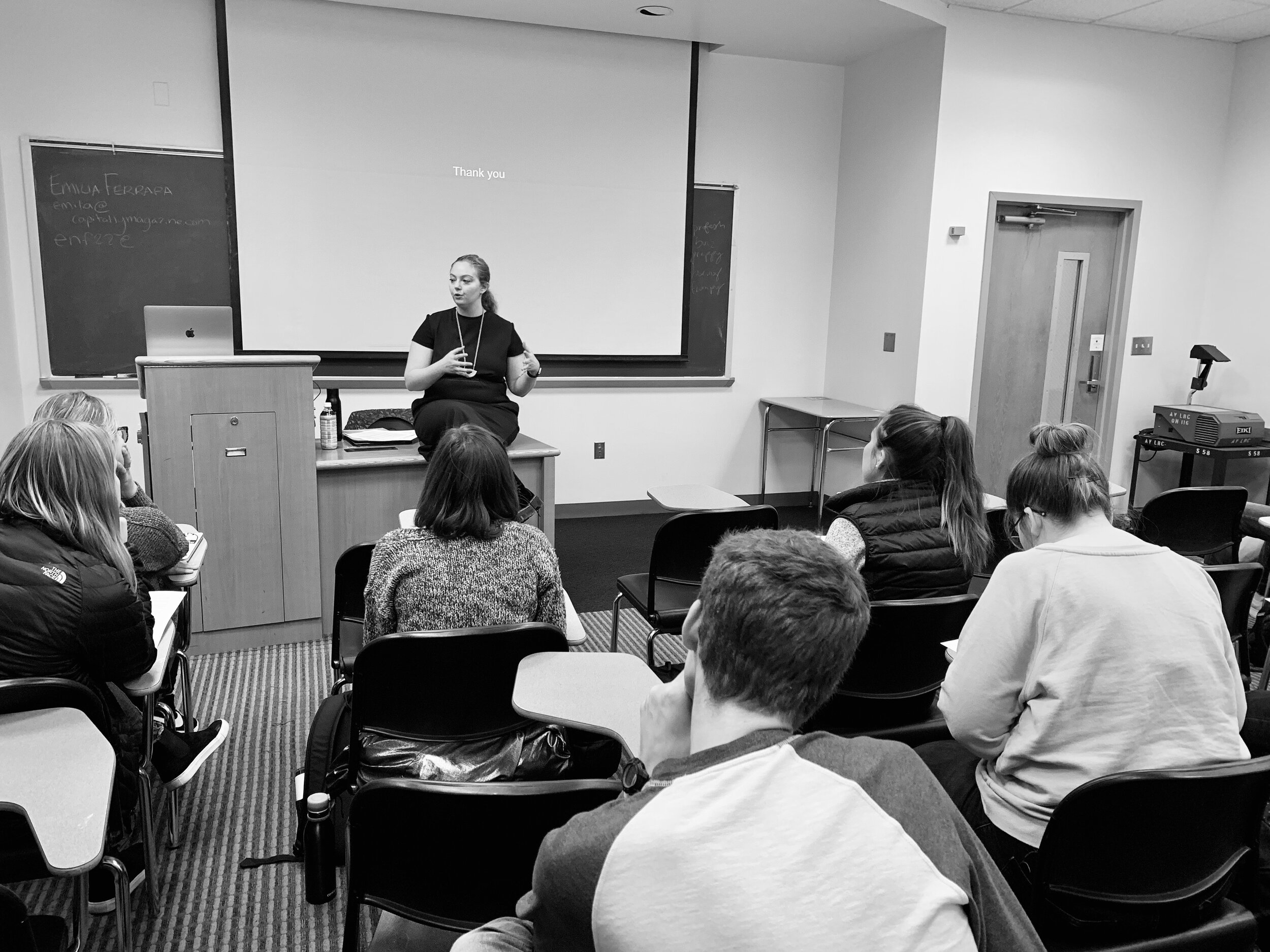Georgetown University: COLLEGE OF ARTS & SCIENCES
adjunct lecturer
“FASHION JOURNALISM” JOUR-366-01
Designers, bloggers, photographers, editors, publishers, politicians and activists all influence our global fashion industry today — be it from Nigerian fashion week to organically grown hemp apparel to the latest retail pop-up on M Street. The goal of this class will be to not only equip journalists with the multimedia skills needed to report on the dynamic world of fashion but to train them to perceive the financial, environmental, humans rights and artistic impacts of dress and style. Students will produce a variety of news stories and consider the many ethical issues shaping the future of fashion.
(2019)
guest lecturer
“MADE IN ITALY: FASHION & FOOD” ITAL-386-01
Featured lecturer for Prof Nicoletta Pireddu.
“WRITING ABOUT MUSIC” MUSC-161-01
Featured lecturer for Prof Anna Celenza.
(2020)
Chance Academy: Middle & High school
associate teacher
“MEDIA NUTRITION: Magazines & Me”
Before students read a magazine casually or just for fun, they need the opportunity to understand the subtle manipulations present. “Magazines and Me” allows students to unfold the detailed nuances of the economics of magazine publishing as well as the psychology behind the reader experience. They receive print copies of titles within the women’s, men’s or fashion genre and pour personal notes into a survey tracking their emotional journey through advertisements, articles and photo spreads. After unpacking their own comforts and discomforts, the class enters small groups to analyze each others data with Microsoft Excel regarding the class reading experience. Finally, students explore the priorities at stake both for magazine publishers and for those activist calling for a healthier industry in a debate that invites all participants to decide how leaders on both sides can find a way forward.
(2015)
“MEDIA NUTRITION: Models & Me”
Models appear everywhere, from tv commercials to YouTube to runways. And yet, the word model often means something to emulate. Students study the current statistics surrounding the financial realities of being a model, as well as health patterns and dangers. Victoria’s Secret become a case study as students compare an Angel to one of their most beloved role models. In this way, each child notes the difference between what they say they want to be and what they emulate on a daily basis. Students also use performance art to re-enact long and painstaking “dressing” rituals models take, including heavy contour makeup. The performance allows for journaling experiences for students to reflect on how they feel transforming themselves into a figure generated by an industry.
(2014)
Many teens have favorite artists, but often know so little about them. The media can portray an artist differently than their biography. “Music And Me” allows students to learn about their favorite artists from an objective standpoint. They also consider how artists’ bright and dark parts of their lives contribute to their lyrics and performances. In the weeks following, students linguistically dissect popular song lyrics and work with visiting performing artists to understand the music theory and thematic message inside. Students research written and visual reports sharing how different major and minor keys, tempos and a lyrics all influence them emotionally. Class concludes with a scientific study revealing healthy habits and practices while listening to music, including: eardrum safety, productivity and time management.
(2013)
“MEDIA NUTRITION: Cell Phones & Me”
What apps can help a young adult focus and what apps can distract them? Should your cell phone be carried in your front or back pocket? These and other questions are answered in the “Cell Phones and Me” course. Students begin by sharing with the class some of their favorite apps and analyze the list to rate them based on positive time management. Students are further asked to identify apps which could make their life easier and which they are not currently using. Finally, students consider all kinds of Internet and cell phone safety, including: how to post on social media, manage their time online, protect their eyes and create distance (as opposed to intimacy) with their mobile technology.
(2013)
BEAUVOIR: THE NATIONAL CATHEDRAL ELEMENTARY SCHOOL
associate teacher
“MEDIA NUTRITION: Magazine Making”
Students decide what a magazine would look like and feel like if they were in charge in this “Magazine Making” class. They vote on names, take their own pictures and brainstorm, research and write stories. Women’s and fashion magazines are brought in for students to examine and cut up with scissors. This enables them to see stereotypes with a fresh eye so that they can make their own rules. In defining their own publishing style, they often choose to increase diversity, avoid Photoshop and stick to topics that only directly relate to their lives. Children already linguistically articulate are welcome as well as those looking for more practice with story structure and project execution. By the end, a unique and fun magazine is published and students celebrate and receive extra copies for family and friends.
(2013)
“MEDIA NUTRITION: Project Runway”
Everyone has to get dressed in the morning, but how can those choices be less materialistic and more about personal style? “Project Runway” introduces students of all elementary ages to the basic vocabulary of fashion. What is a double breasted suit? What is the difference between rhinestones and sequins? On the first day, behind-the-scenes clips are shown of real runway shows and students are asked to watch with a critical eye. Do all models have to be skinny? Why does no one smile on the runway? Students discuss these and other questions and then are given six weeks to study their own style inspiration, design their own collection and plan a group fashion show. By setting up a safe environment which encourages skepticism and stereotype breaking, children have the freedom to form their own views of style, dress and how to conduct business in the fashion industry. Term ends with a party and a fashion show which students perform for family and friends.
(2012)

